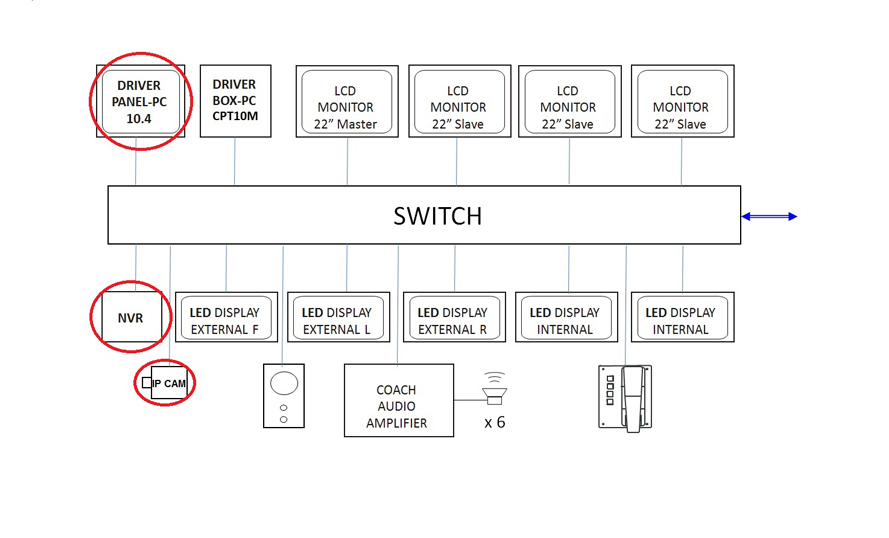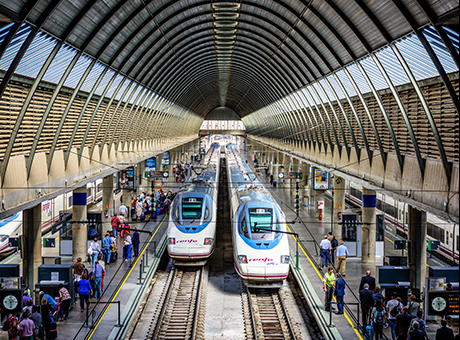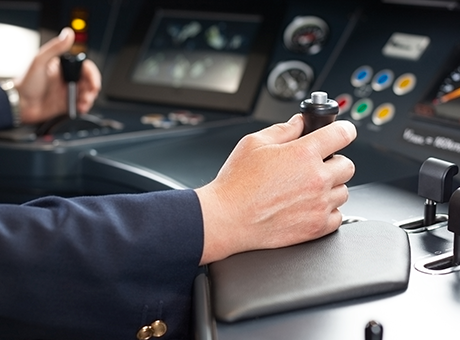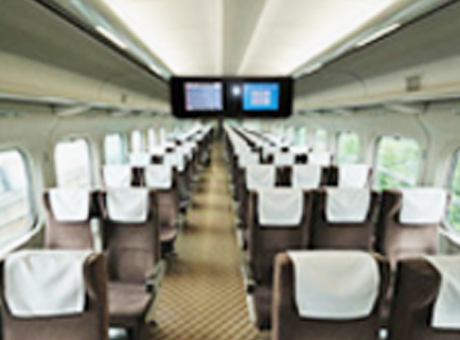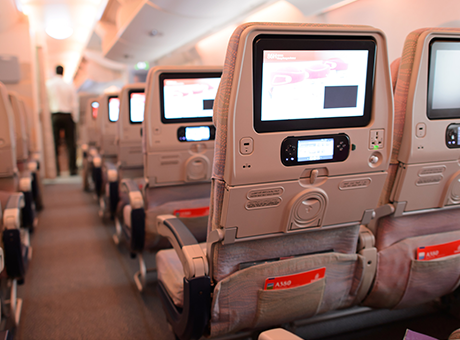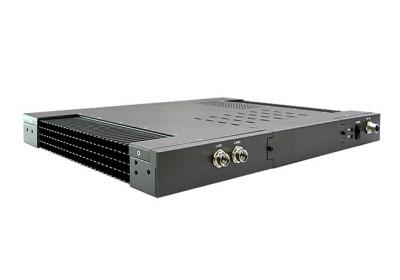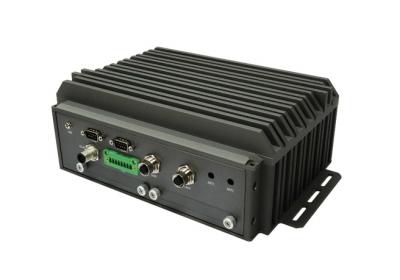Railway & Rolling Stock

From nowhere to anywhere, from metro, commuter train to high-speed, long-distance train, railway has brought big convenience to human transportation. Nowadays, train is no longer for just transport, the security it possess and the passenger information, advertisement, audiovisual entertainment it provides has been highly valued. Based on Backbone Network (BN), four required to build up an on-board passenger integrated system for high-level service achievement: Audio Public Address (APA), Passenger Information Display System (PIDS), Video Surveillance (CCTV) and Passenger Entertainment System (PES).
Running through various environment and long period operation, railway systems require extreme rugged solutions for stable and efficient performance under harsh and unpredictable condition, such as fluctuating weather, continuous vibration and sudden shock. STACKRACK railway solutions greatly receive recognition with their high ability of anti-shock and vibration, wide temperature range durability and strict design under MIL-STD-810G and EN50155 standards, guaranteeing system performance through long-way journey.
Take Bombardier KFW I-9000, a successful transportation build-up in Jakarta in 2011, as reference, STACKRACK come up with ideal solutions for railway, providing complete platforms and portfolio which are ideally fit for Train Event Recorder, Content Server and Passenger Infotainment; expecting to support future railway construction from Southeast Asia, Asia, to Europe.
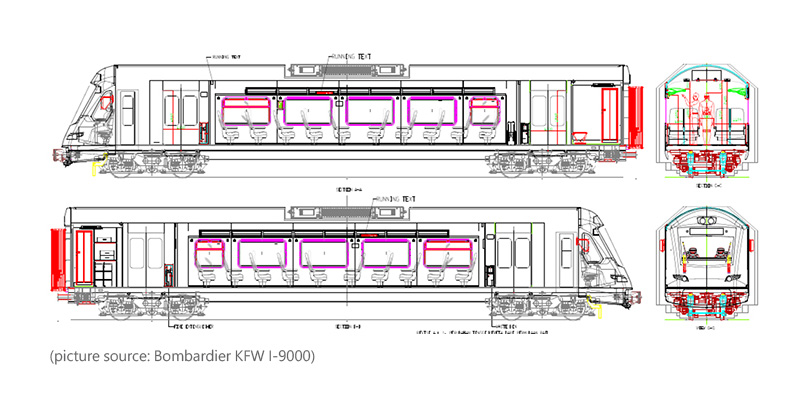
The STACKRACK Intelligent Infotainment Video Recorder & Server System (IIVRS) is the brain behind the muscles that powers STACKRACK's rolling stock. It is a modular, scalable, secured and open-standard control and communication platform which manages and controls the flow of information both on-board sub-systems like IP Camera, passenger infotainment, alarm, and between the train to ground stations.
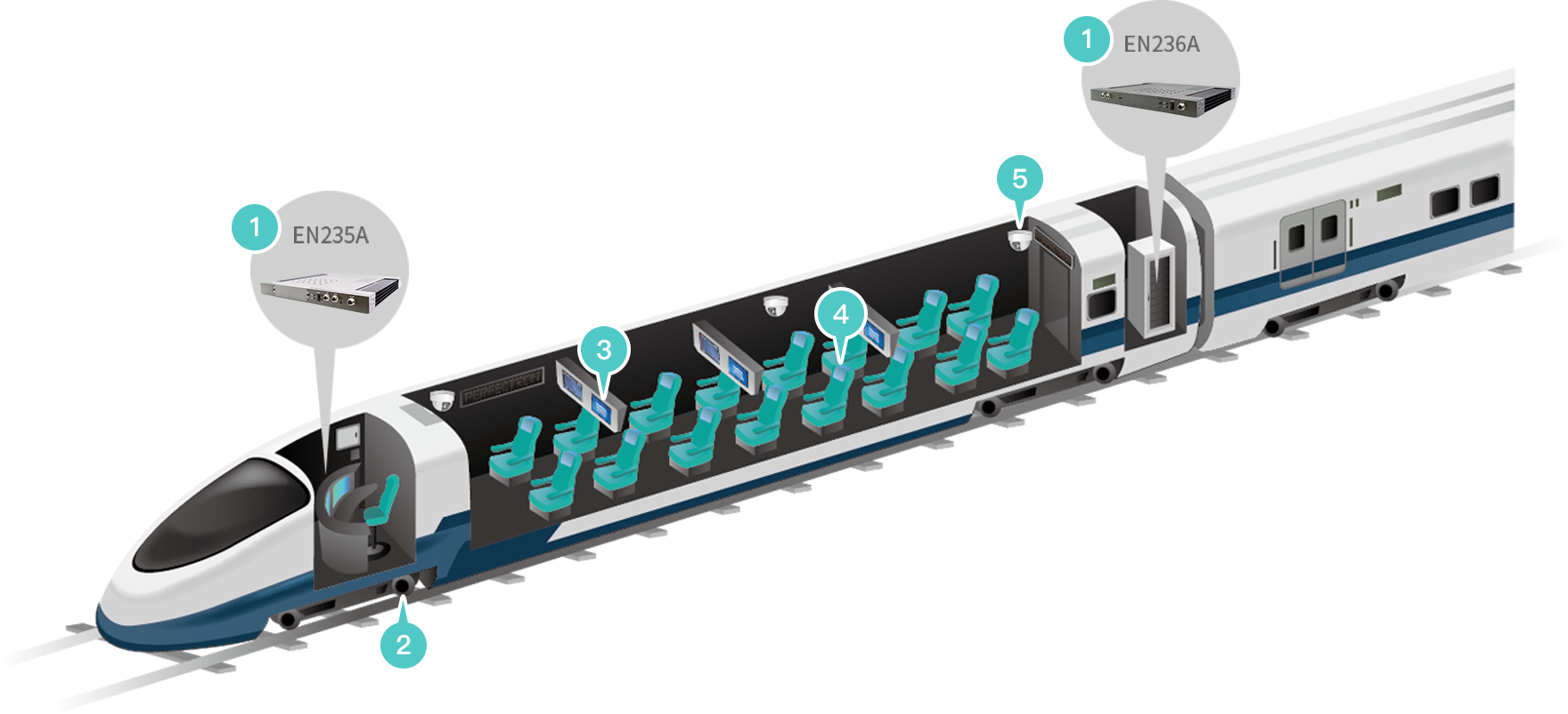
- Backbone Network(BN)
-
Every sub-system holds its own mission, but at the same time they tightly connect with one another based on Backbone Network. BN is a part of computer network that interconnects various pieces of network, providing a path for the exchange of information between different LANs or sub networks, playing an important role as solid and dependable network in railway solution.
Railway Backbone Network is the basic and main infrastructure of the train which supports versatile applications, such as PIDS, PA, CCTV, and data communications, which are transmitted through SONET/SDH or Ethernet. They combine Ethernet Train Backbones (ETBs) with Ethernet Consist Networks (EC). Connecting with multiple sub-systems, BN plays a critical role in system combination; it requires EN50155 certified standard in order to maintain stable operation in harsh Environment and in high-speed moving train. The complete train control network system must have ability to avoid IP address conflicts when managing network consists and delivering data from the on-board network to trackside control centers.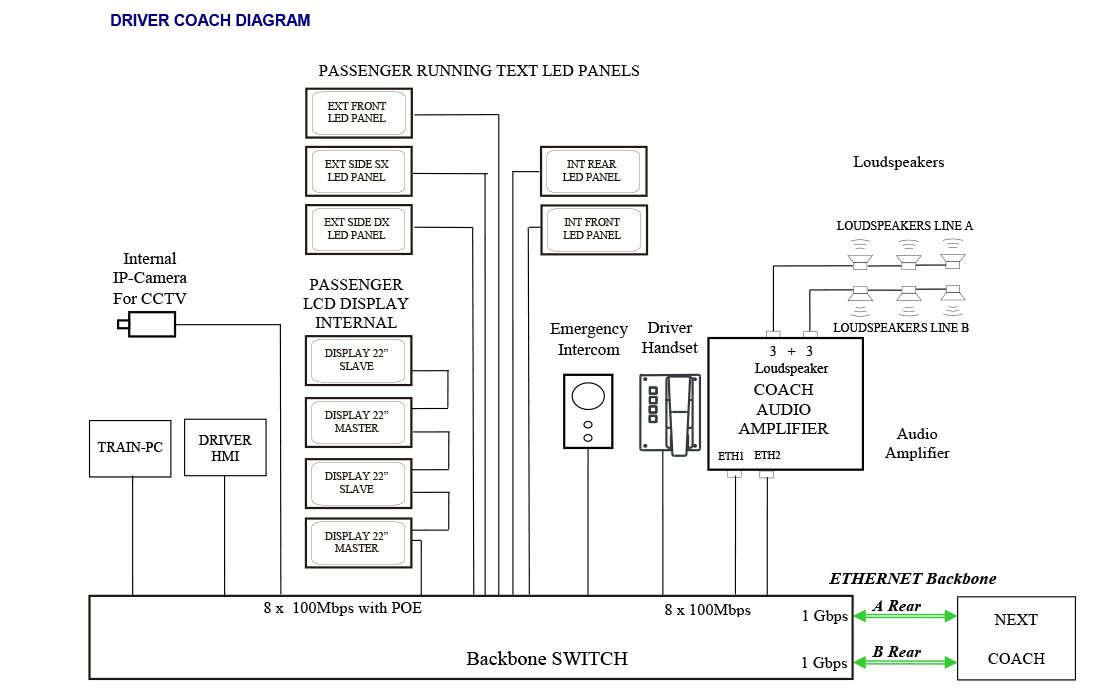
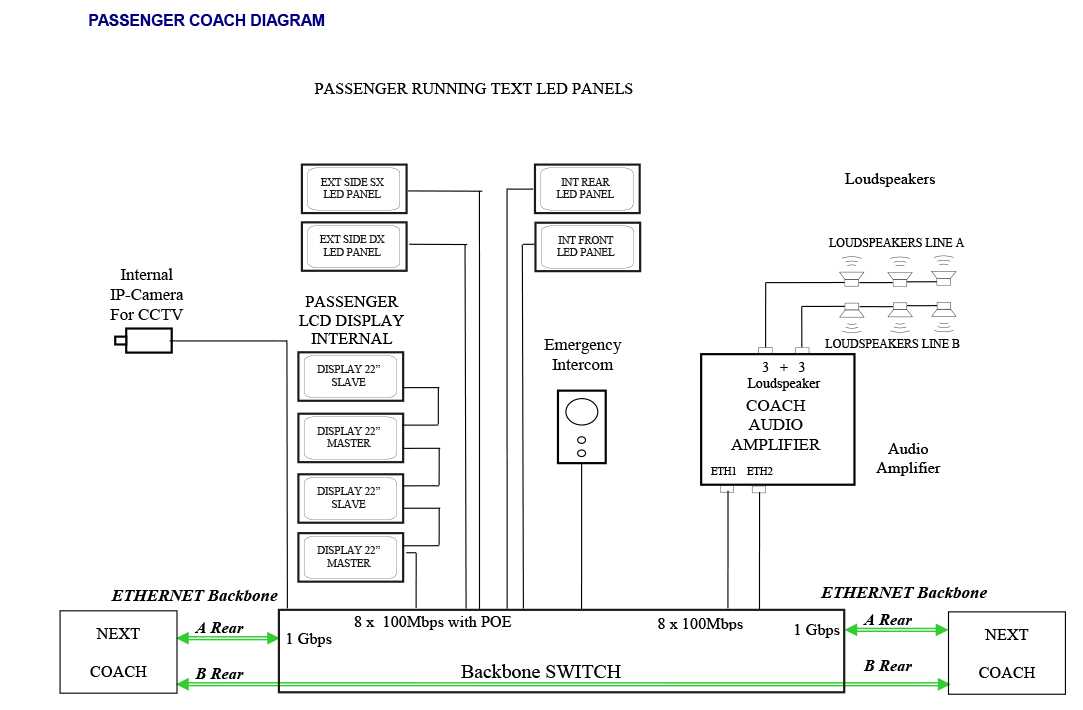
- Audio Public Address& Intercom Call (APAIC)
-
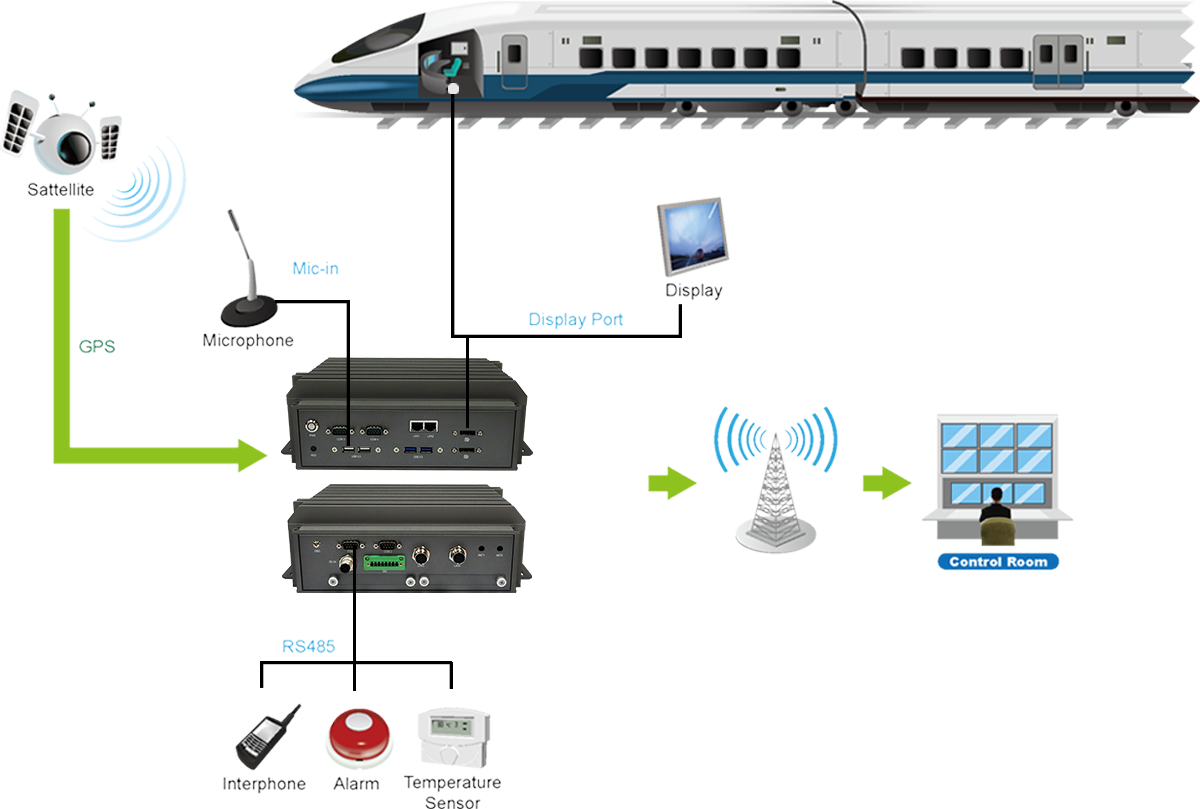
Audio Public Address & Intercom Call (APAIC) system is an electronic sound amplification, control and distribution system generally using Voice over IP (VoIP). System combines audible sounds via electronic devices such as microphones (Handset and Intercom), BoxPC, PanelPC, amplifiers and loudspeakers. APAIC also needs to be integrated with existing railway databases, software, and security systems. High-quality public address and voice evacuation systems are essential for making announcements and dealing with security and safety challenges with maximum reliability and speech intelligibility.
In railway, APAIC serves as an audio communication solution between two cabins of a train or between a vehicle and the Operational Control Center (OCC) and moreover the platform in some applications. The audio channels are established between train personnels as train driver or train conductor, synthesized voice prerecorded in PCs and passengers for real-time automatic information announcements (departures, arrivals, etc.), as well as emergency proclamations. APAIC system can be divided into three subsystems: Public Address (PA), Passenger Alarm (Emergency) Calls and Service (Train Staff) Calls.
APAIC system provides Public Address (PA) speakers and Driver Handset for announcements from driver to passenger, consisting of manual and prerecorded automatic announcements; Passenger Alarm (Emergency) Call system possess Driver Handset and Intercom call, allowing driver and passenger to easily communicate with each other; while Service (Train Staff) Call system provides communication between train personnel with Driver Handsets and Intercoms.
As a part of security system, APAIC possess compact connection with CCTV (Video Surveillance) and PIDS (Display) systems, from i mage capturing and displaying, driver recognition and determination, to final announcing actions. The APAIC announcements are co-ordinated automatically with PIDS for Real Time Passenger Audio and Video Broadcast.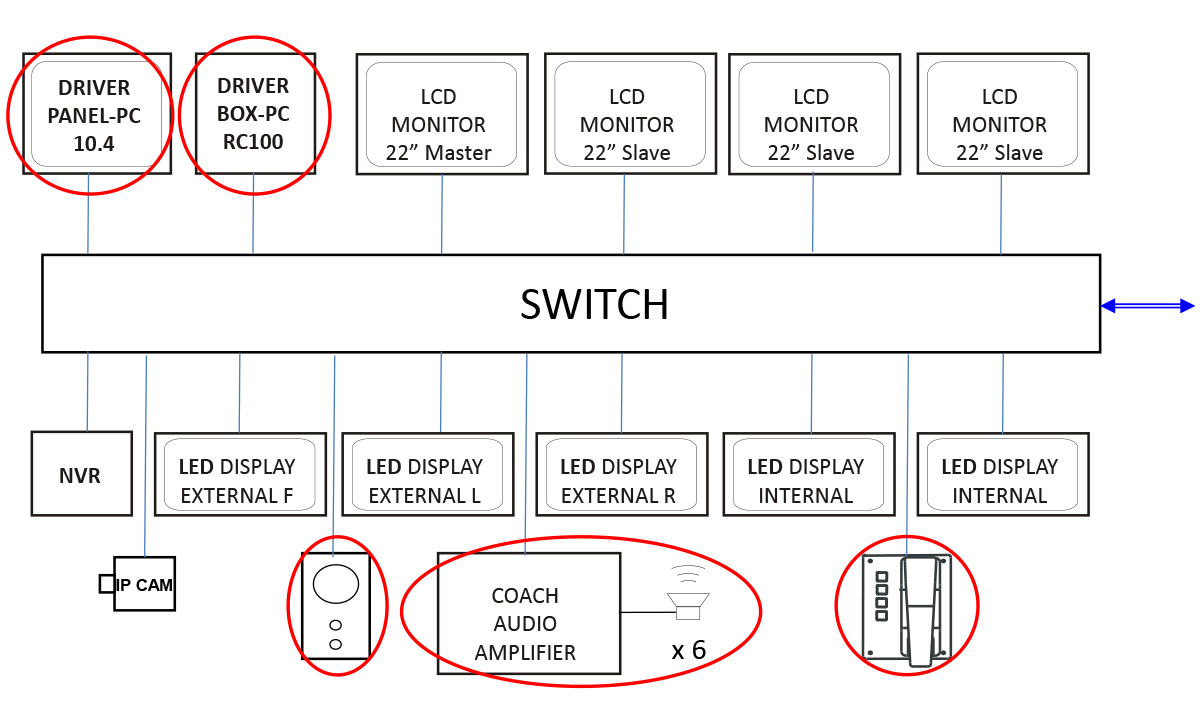
- Passenger Information Display System (PIDS)
-
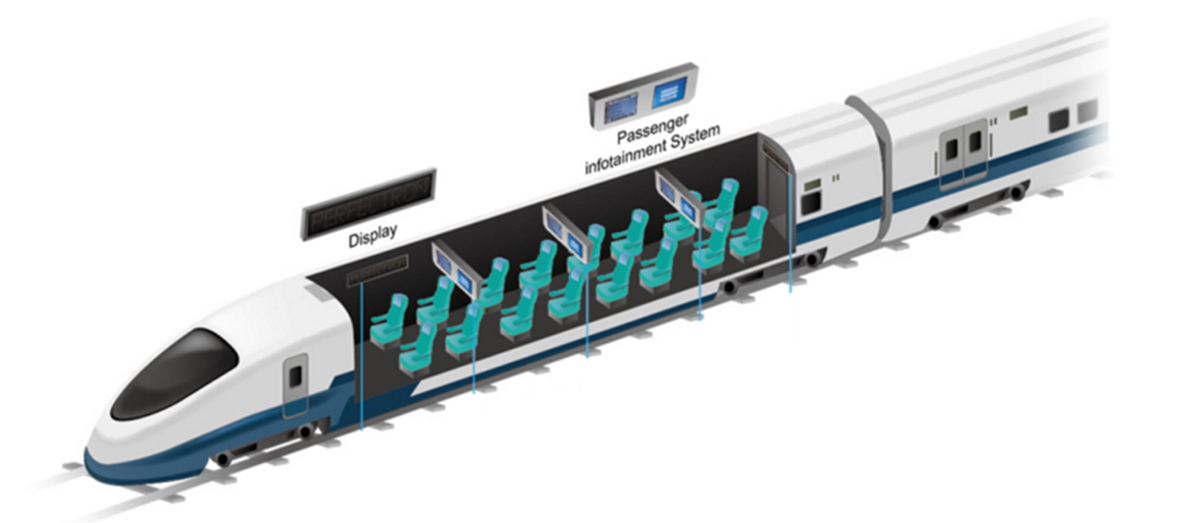
Passenger Information Display System (PIDS) is the digital subsystem capable to provide visual real-time information to passengers, such as arrival at next station with scheduled and actual times, moreover, news, entertainment/advertisement contents and emergency announcements.
Railway solutions need to catch up with latest regulatory requirements and high quality service to meet passenger expectations. As the result, PIDS become more indispensable in nowadays, especially develop along with highly demand in field of entertainments and advertisements. PIDS provides more than traditional audio passenger information, such as travel information (train connection times, train arrival and departure times, weather forecasts…) and safety information (exit and entry guidance, evacuation guidance), system also provides entertainment contents, news, commercial information and so on.
PIDS possess LED panels and TFT-LCD screens. External front and side LED panels inform passengers from the outside of the train about train line and number, final destination and additional journey information as intermediate stops with scheduled time. Internal simple LED panels and advanced single or double screen TFT-LCD monitors allow the passengers to view advanced information, entertainment and advertisement contents with text, images and videos.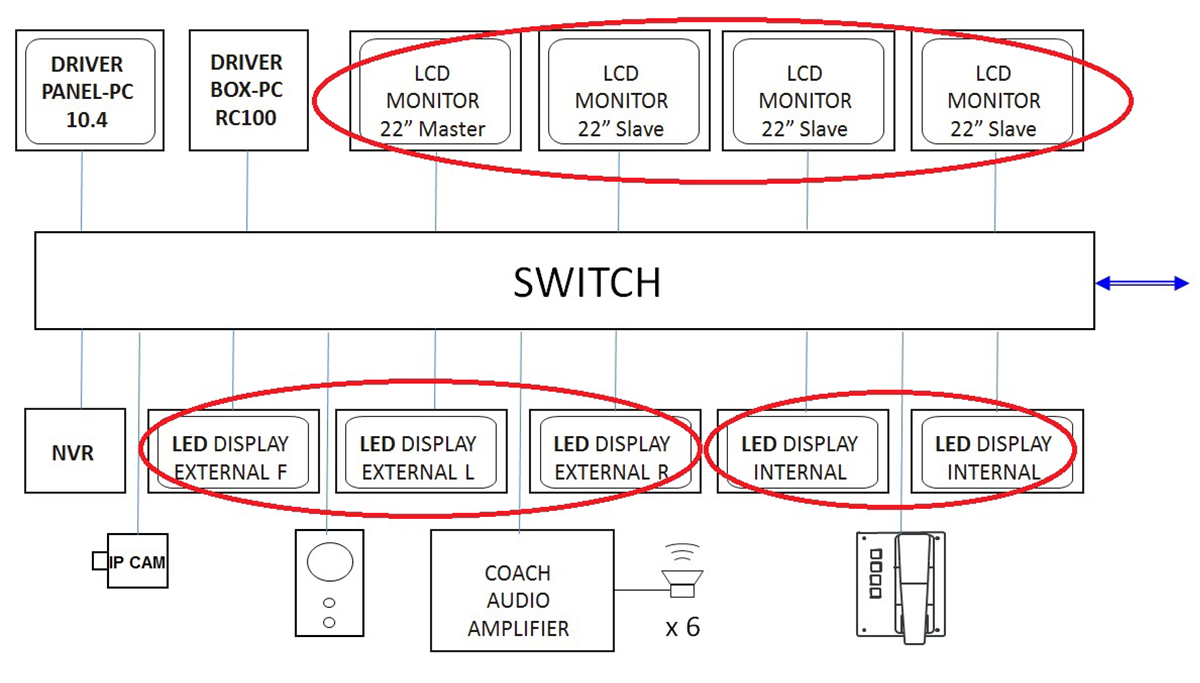
- Passenger Entertainment System (PES)
-
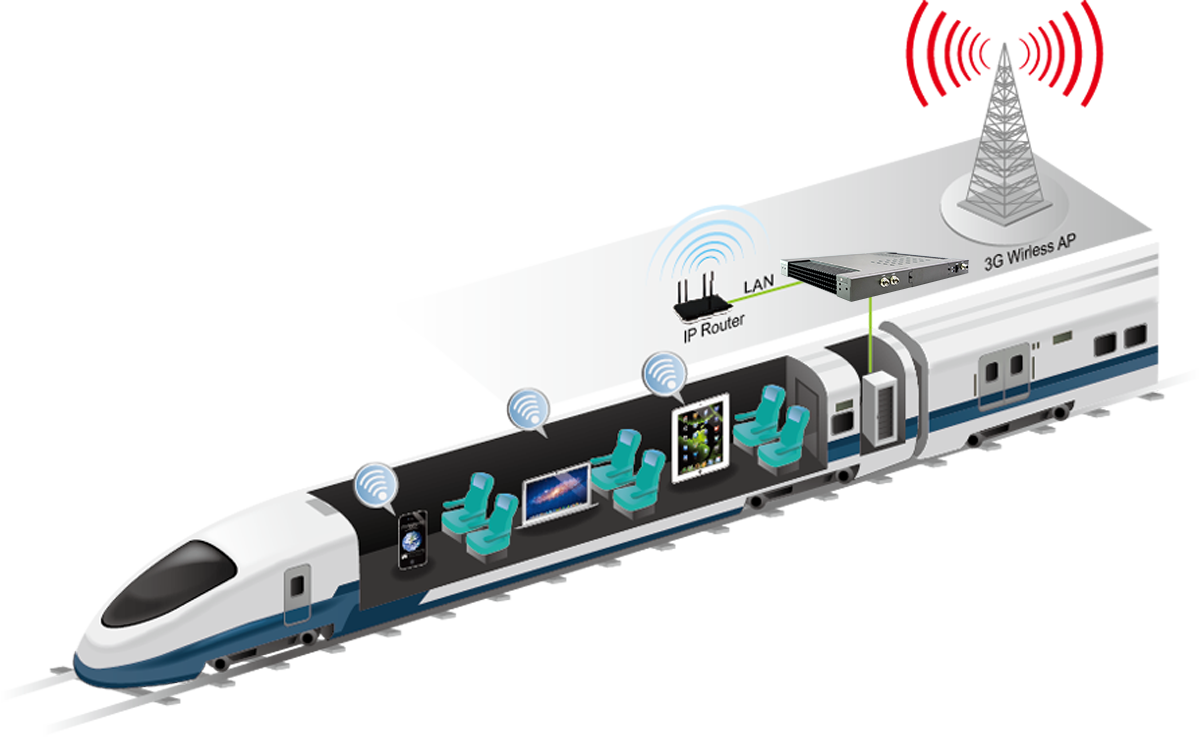
The Passenger Entertainment System (PES) allows the passengers to exchange multimedia contents with the train through their own devices as smartphones tablets and laptops. Nowadays the coach standard local Wireless connection is Wi-Fi enabling the passengers to receive information about train journey, news, entertainment contents and advertisement during the entire stay of the passenger on the train. Sometimes internet connectivity is a service available on high speed or long distance trains. The main equipment of this subsystem are: wireless access points, multimedia Servers and optionally communication gateways for internet connectivity
- Video surveillance / Closed-circuit television (CCTV)
-
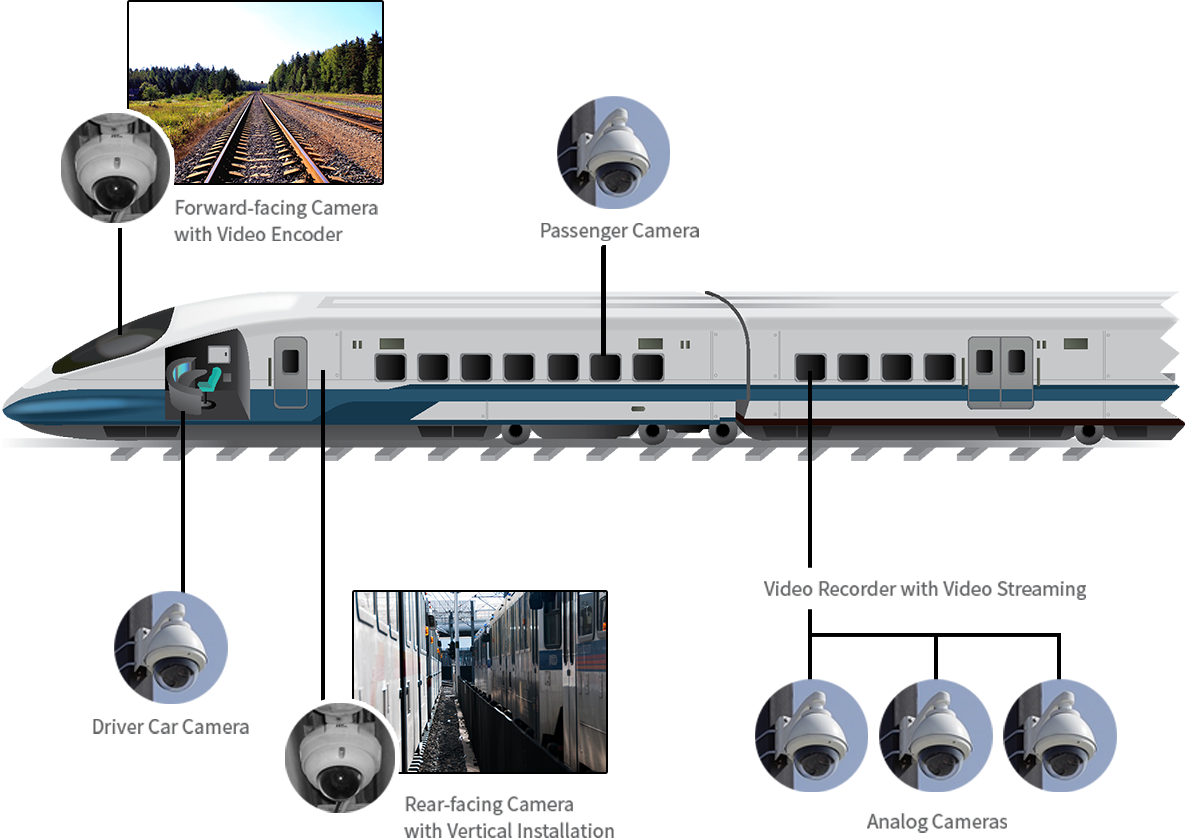
Closed Circuit TeleVision (CCTV), also called Video Surveillance, is normally IP based in order to provide security solutions on railway stations, platforms, trains, cabins and passenger areas. System basically consists of different types and several cameras and monitors.
The Forward and Rear Facing Closed Circuit Television Camera System (FF-CCTV) at the front and rear of the train provide real-time view for driver. Its recording provides information on what has happened in the view of driver. It can be used as evidence for police in case of any accident. Driver Car Cameras system (DC-CCTV) provides surveillance for immediate image capture of driver’s action. Passenger Areas Cameras (PA-CCTV) system offers real-time monitoring of all the vehicles of the train and allows several actions on the captured images as recording, replaying and viewing in a remote site as Operating Control Center (OCC).
To prevent machines damage in harsh environment, a specific memory and storage modules are also important. System should be required to have wide range power supply input, with ignition delay on/off in case of any situation and non-stop operating especially for requirements of long-distance trains.
The NVR (Network Video Recorder) or DVR (Digital Video Recorder) allows video recording in digital format to HDD, SSD, USB flash drive, SD memory card or other local or network storage device. Redundancy of this equipment is often required and needed for the importance of its task.